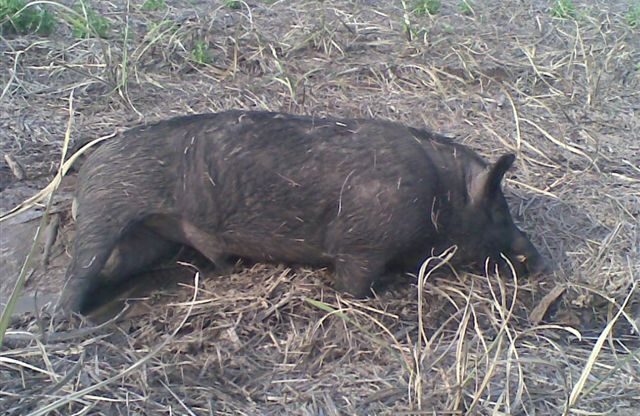The Problem with Feral Pigs
Feral pigs were introduced into the Australian landscape via earlier settlers and have since caused an extensive amount of damage to environmental areas, and high quality agricultural land each year as a result of rooting, wallowing, grazing, trampling and predation. Feral Pigs are also carriers of weed seeds and have the ability to be potential carriers of, but to limited to the following diseases should they enter Australia – leptospirosis, foot and mouth, and Q fever.
They prefer to inhabit areas that have a permanent water source as well as access to food and thick dense areas of vegetation for shelter making drainage lines such as creeks and rivers, wetlands, swamps and mangrove areas perfect pig habitat. These creatures are opportunistic, omnivores feeding on a variety of foodstuffs including; crops, roots, earthworms, frogs, insects, crabs and fruits.
The Life of a Pig
Boars
Lifestyle: usually solitary
Home Range: 8- 50km
Weight: usually 80- 100 kg
Facts: Feral Pigs have different features to domestic pigs including: larger snouts and tusks; sparser, longer and coarser hair. Colours generally range from black to spotted black and white buff coloured.
Sows
Lifestyle: Family Group
Home Range: 2-20 km
Weight: usually 50-60 kg
Facts: Under good conditions (plenty of food and water) and with a 113 day gestation period sows can have 2 litters of 4 – 10 pigs a year. Piglets are weaned after 2-3 months.
Piglets (Suckers)
Lifestyle: Family Group
Home Range: 2-20 km
Weight: 25kg at 6 months
Facts: After birth piglets spend the first 1-5 days inside the nest. They reach sexual maturity at 6 months of age. However piglet mortality can be high if the mother does not have access to a large amount of protein.
References
- Department of Sustainability, Environment, Water, Population and Communities fact sheet
Further Information
